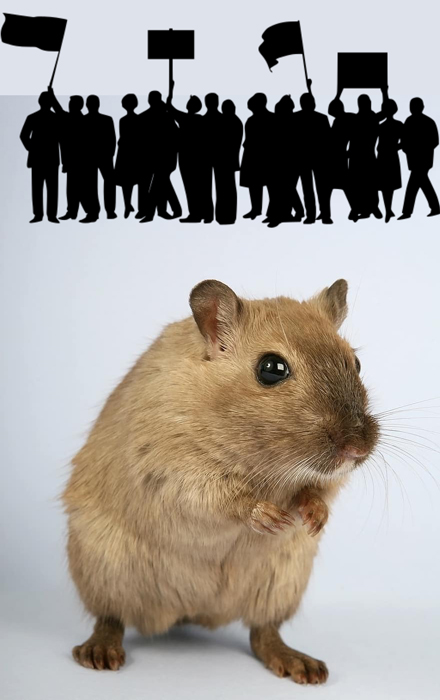Over the years, when there’s been conflict between groups – like what’s been in the news lately, I’ve thought of a lesson from watching pet gerbils. About what sparks conflict in situations where both sides avow nonviolence. And when, in fact, there’s been peaceful coexistence.

Back in the early 1970’s I still had some gerbils. 4 or 5 from the same litter in a large glass-sided tank. All just fine – together in communal nest … grooming bonds in play and rest.
One time a friend asked me to take care of a similar litter of gerbils while she was away. In a separate cage. Side by side, all just fine.
Then I began to wonder how they’d all get along together. Perhaps after reading about interactions between chimp tribes in the wild. Or reading about pack animals.
So, I partitioned my tank into equal areas, using a framed wire mesh screen. I waited for days. That arrangement appeared to work. Some interest between the two groups. But no real conflict. Just some occasional skittishness by one of mine, a smaller gerbil (the “runt” of the litter).
At some point, I started placing one of my gerbils in with my friend’s. Briefly. And waited. If there was no problem, I added another – but not the smaller one. That worked. (I recognized which group each belonged to.)
Finally, I tried placing the small one in with all the others. That was okay for awhile … but it always started fighting with one of my friend’s gerbils. Not play fighting. Despite one of my larger gerbils sort of acting as a peacekeeper, grooming the small one. No rest. Conflict escalated.
I restored both groups to separate spaces. Peace & order again.
Anyway, we’ve moved beyond the “love train.” Polarization. With performative illiberal illogic. Is the divide really about ideology? Perhaps more about temperament?